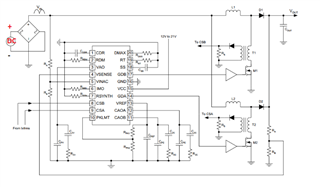Tool/software:
Hi
I am designing a high-voltage, 3-phase inverter with an interleaved Continuous Conduction Mode (CCM) PFC controller using the UCC28070 at the driver input. My goal is to make the design compatible with both AC (85 VAC to 265 VAC) and DC (120 VDC to 400 VDC) supply inputs.
If I apply a DC input at the AC input terminals before the bridge rectifier, what will happen to the UCC28070? Will it automatically disable itself, allowing the DC voltage to pass through the PFC inductor and diode directly to the DC link?

MM

